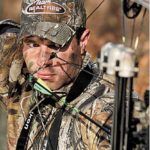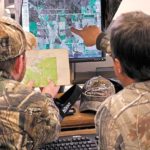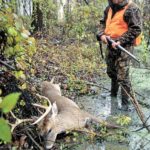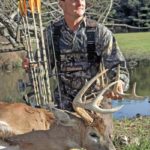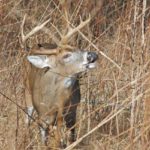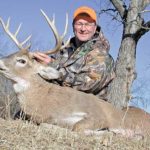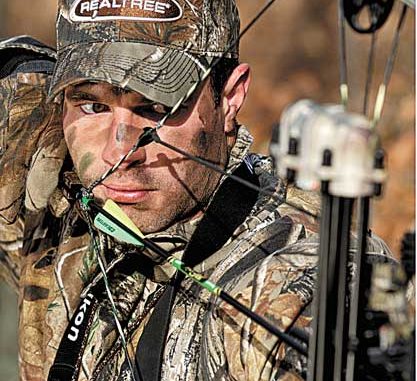
Want to add some tasty meat to your freezer? Then hunt one of these three parishes, where deer may outnumber the residents.
To raise trophy deer, you need to establish a long-term land-management program, including plans for supplemental feeding, green-field planting, protecting younger age-class bucks and maintaining your herd under the carrying capacity of the land. Whether you’re hunting in Louisiana or any other state in the country, if you want to take big bucks, first find good dirt.
You’ll locate the best trophy-buck hunting in Louisiana along the Mississippi Alluvial Valley, the parishes typically west of the Mississippi River, above Baton Rouge. The Mississippi Alluvial Valley includes Avoyelles, Concordia, Catahoula, Tensas, Franklin, Madison, Richland, West Carroll, East Carroll and Morehouse parishes.
Biologist Emile LeBlanc reports that the state manages about 1.6-million acres of land under DMAP and LADT.
“The LADT program was created to help landowners with nuisance deer on properties with less than 500 acres down to as few as 40 acres,” he said. “The difference between the LADT and the DMAP programs is that no biological data is collected from the deer harvested in the LADT program. The landowner only has to provide the number of bucks and does harvested, the dates harvested, the name of the person who took each animal and the weapon used.
“With the DMAP program, we also get the jawbones and the weights of the deer, the antler measurements and other information that allows the wildlife biologist to make better harvest recommendations for participants in DMAP.”
The 2008-09 season was the first with a mandatory deer-tagging program. The voluntary tagging program was started in 2001, primarily to address the problem of crop depredation caused by deer. Last year, all the deer harvested were required to be tagged, and hunters were required to call in and validate tags.
Hunters and biologists wanted the program to collect biological data that would help better manage deer on a parish-by-parish basis rather than on a statewide basis. The tagging program also provided law-enforcement officers with another tool to protect and manage the deer herd. From the tagging system, LeBlanc and his team could identify better the parishes producing the most deer and the parishes producing some of the biggest deer.
“We wanted a better method to be able to manage deer habitat and deer harvests on to the local level, if necessary,” LeBlanc said. “We’re trying to manage the herd more based on habitat type than on an overall statewide scale. One day, we’d like to manage our herd according to the ecosystems in different sections of the state.”
By gathering this information, biologists can provide better management data to individual hunting clubs in the different ecosystems across the state. Better management recommendations will result in balanced deer herds and possibly larger and older bucks, if that’s the management scheme an individual club prefers.
With any change in management and any new restrictions or information-gathering programs, there’s always a period of adjustment.
“Generally, hunters are very traditional in Louisiana and throughout the South,” LeBlanc said. “Old ways change slowly, and new ways take a while to implement. We’ve had some problems with hunters who never have tagged deer before trying to remember to tag those deer as soon they harvest them. There’s a learning curve that all state hunters have to go through as to what information is requested when a hunter tags a deer.
“However, overall, the tagging system has been well received. The hunting public in Louisiana has been overwhelmingly in favor of a tagging system. Eighty percent of the hunters who have responded to our survey about the tagging program have been in favor of it.”
When a deer’s harvested, the hunter must record the date he took the deer and the name of the parish on the tag, and then attach this tag to the deer before the animal’s moved. The tag must remain attached to the deer while kept at camp or transported to the domicile of the hunter or to a cold-storage facility. Hunters who keep the carcass or meat at camp also must comply with the game-possession tag regulations. Within 72 hours, a hunter has to validate his kill by calling the toll-free validation number at 866-484-4805, or using the validation web site, wildlifelicense.com/la/start.php. The hunter then will receive a validation number to write on his license with the tag number on it.
Hunters harvesting deer on DMAP and LADT lands should follow the instructions provided to them by the Louisiana Department of Wildlife and Fisheries. Hunters on wildlife-management areas can validate deer during mandatory deer-check hunts, when deer-check stations operate.
“This information gives us the number of deer harvested in each parish, and whether the deer was taken on public or private land,” LeBlanc said. “Then we use this data to better understand the number of deer harvested per county and identify the region where the most deer are harvested. We also can determine if the deer was antlerless (a button buck), a buck or a doe.
“If we can get more hunters to comply with our tagging system, we can get better harvest numbers each year. We don’t want to gather too much data from our tagging program at this point, because if the tagging system becomes too complex, we may have less compliance.”
To obtain more information on game-possession tag regulations, and the DMAP and the LADT deer-management-assistance programs, check out www.wlf.louisiana.gov/publicservices/deermanagementassistance/applications/.
Health of the herd
“We want to continue to maintain a healthy, viable deer population for the next 10 to 20 years,” LeBlanc said. “We want to try to keep the deer’s habitat in good shape. Then we’ll have high productivity and quality, based on habitat limitations. Each habitat type will produce different sizes and numbers of deer.
“Our most-fertile habitat is along the Alluvial Valley, but good deer habitat is throughout Louisiana. Our biggest problem is trying to maintain a good annual doe harvest to help us maintain our deer herds below the carrying capacity of the land. We have some hunters who get spooked when they shoot a good number of does, causing the does to become nocturnal.
“Many times these hunters will think they’ve overshot the herd or taken too many does, but actually the does simply have become nocturnal, only feeding at night. They stop moving around as much during daylight hours as they once had. So the hunters don’t see the does.
“We have some habitat where the potential for overharvest is present, especially in areas of lower productivity. However, in most good deer habitat, hunters and hunting clubs will have a really difficult time harvesting too many does.
“We have parts of the state where harvesting enough does to keep the herd below carrying capacity is really difficult for hunting clubs and landowners. One of our major problems is that as our hunters get older, they let a number of does pass, waiting on a bigger buck. Or perhaps they don’t want to take any antlerless deer because they don’t want to drag them out of the woods and butcher them.
“So in some of the better deer habitat, hunting clubs and landowners are really challenged to take enough does to keep their herds below carrying capacity and in good shape.”
Deer hotspots
“Union Parish has the highest harvest rates of deer in the state, and has maintained this status for the last several years,” LeBlanc said.
According to LeBlanc, Union consistently produces the most deer because it’s a very rural county, has a good diversity of mixed-pine and hardwood forests, lies in the northwest pine/hardwood region of the state and has a number of sportsmen who take their deer hunting seriously and hunt hard all season.
Hunters also have extremely high odds for taking deer at Bienville and Claiborne parishes. In Union, Bienville and Claiborne, you’ll find great deer hunting at Union WMA (11,192 acres), Jackson-Bienville WMA (32,185 acres), Upper Ouachita NWR (42,594 acres), D’Arbonne NWR (about 17,421 acres) and Kisatchie National Forest, which totals more than 604,000 acres and lies in parts of seven parishes, including Grant, Natchitoches, Winn, Rapides, Vernon, Claiborne and Webster.
If you’re looking for deer with big racks this season, look first for the dirt that’ll be under their feet. Good soil produces highly nutritious plants, which in turn produce big-bodied deer with large antlers.
To put venison on the table, consider hunting the parishes that produced the most deer last season and have a history of producing the most deer. The choice is yours, the land’s available to hunt and the deer are there.
